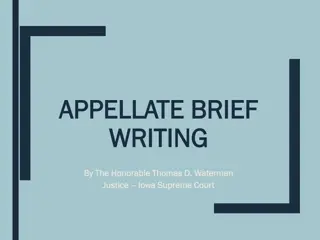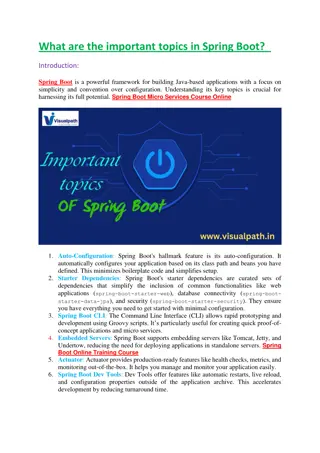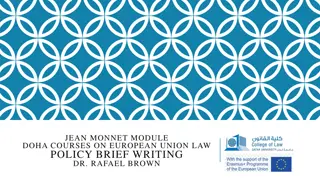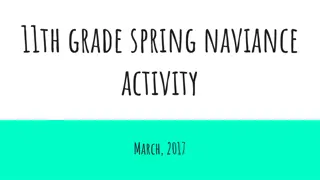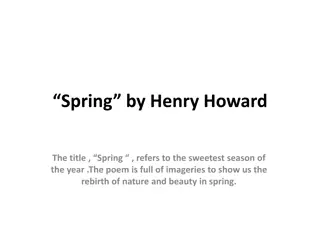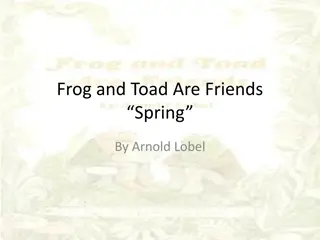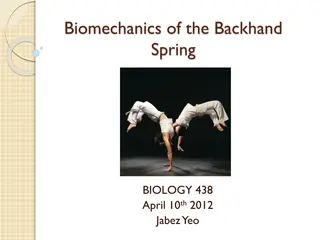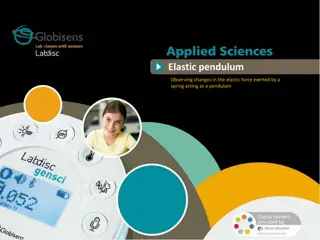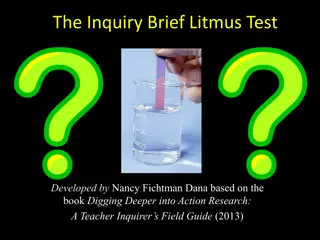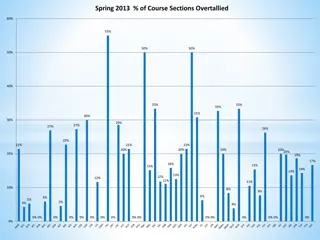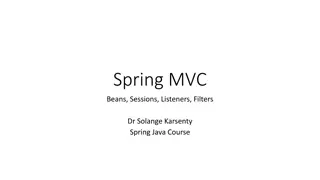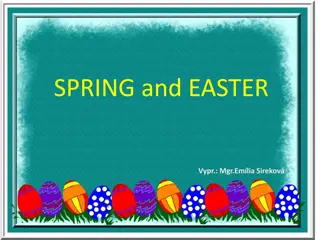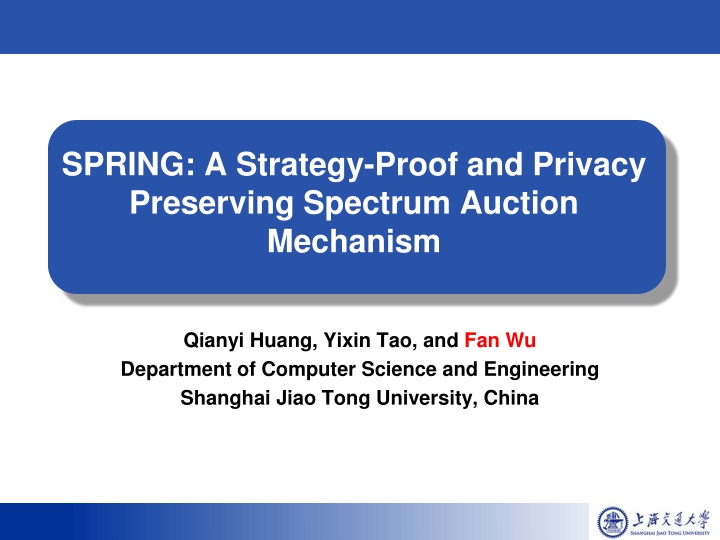
Privacy-Preserving Spectrum Auction Mechanism: SPRING Strategy
Explore SPRING, a Strategy-Proof and Privacy-Preserving Spectrum Auction Mechanism developed by Qianyi Huang, Yixin Tao, and Fan Wu from Shanghai Jiao Tong University. The mechanism addresses the challenges of protecting bidder privacy in spectrum auctions, providing a innovative solution for efficient allocation. Discover its motivation, evaluation, and conclusion, alongside insights into the secondary spectrum market and traditional spectrum auctions.
Download Presentation

Please find below an Image/Link to download the presentation.
The content on the website is provided AS IS for your information and personal use only. It may not be sold, licensed, or shared on other websites without obtaining consent from the author. If you encounter any issues during the download, it is possible that the publisher has removed the file from their server.
You are allowed to download the files provided on this website for personal or commercial use, subject to the condition that they are used lawfully. All files are the property of their respective owners.
The content on the website is provided AS IS for your information and personal use only. It may not be sold, licensed, or shared on other websites without obtaining consent from the author.
E N D
Presentation Transcript
SPRING: A Strategy-Proof and Privacy Preserving Spectrum Auction Mechanism Qianyi Huang, Yixin Tao, and Fan Wu Department of Computer Science and Engineering Shanghai Jiao Tong University, China
Outline Motivation Preliminary SPRING SPRING with Multi-Channel Bids Evaluation Conclusion
Secondary Spectrum Market Government: static long term licenses Radio spectrum is not fully utilized New wireless applications have to crowd into limited unlicensed bands Need for Dynamic Spectrum Redistribution/ Auction
Traditional Spectrum Auctions Auctioneer Bidders Channels Spectrum auction mechanisms stimulate the bidders to a) True valuations are sensitive information b) Corrupt auctioneer truthfully reveal their valuations of spectrum/channels.
Motivation Existing spectrum auction mechanisms fail to protect bidders privacy. Existing privacy preserving auction mechanisms cannot be directly applied to spectrum auctions. Channel 1 Channel 2
Generic Strategy-Proof Spectrum Auction Four bidders are competing for one channel B ??= 2,??= 3, ??= 1,??= 4 C A D ?1={A, C}, ?2={B, D} ?1= ?1 min ??,?? = 2 1 = 2 ?2= ?2 min ??,?? = 2 3 = 6 ?2> ?1, hence ?2 is the winning group. Both ? and ? are charged with ?1 ?2=2 2= 1.
Outline Motivation Preliminary SPRING SPRING with Multi-Channel Bids Evaluation Conclusion
Order Preserving Encryption OPES encrypts numeric data while preserving the order. It enables any comparison operation to be directly applied on the encrypted data. ? = ?1 ?2 ,??, ?1< ?2< < ?? OPES ? = ?1 ?2 ,??,?1< ?2< < ??
Oblivious Transfer ?1,?2, ,?? c {1,2, ,z} Sender has z secrets Receiver has choice c Sender doesn t know c Receiver only learns ??
Outline Motivation Preliminary SPRING SPRING with Multi-Channel Bids Evaluation Conclusion
SPRING End-to-end Asymmetric Encryption Oblivious Transfer
Design Details - Step 1: Initialization a) SPRING defines a set of possible bid values as ? = ?1 ?2, ,??, ?1< ?2< < ??. b) The agent applies ???? on ? to get ? = ?1 ?2, ,??,?1< ?2< < ??. c) The agent initializes the parameters of oblivious transfer.
Design Details - Step 2: Bidding 1-out-of z OT c) Bidder ? encrypts ??: ??= ??????? ??,??????. a) Each bidder ? chooses a bid ??= ?? ?. e) The agent collects bids, groups bidders in a bid-independent way, publishes the grouping results and encrypted bids. b) Bidder ? receives ??= ???? ?? = ??. d) Bidder ? sends ??to the agent.
Design Details - Step 3: Opening a) The auctioneer decrypts the bids. d) The auctioneer calculates group bids. b)The auctioneer locates the lowest bid ????in each group. e) The auctioneer determines the winners and their charges. c) The auctioneer resorts to the agent to fetch the original value ????of ????.
Analysis Theorem 1. SPRING is a strategy-proof spectrum auction mechanism. We require that each bidder group must contain at least k bidders. Then we have Theorem 2. SPRING guarantees k-anonymity.
Outline Motivation Preliminary SPRING SPRING with Multi-Channel Bids Evaluation Conclusion
Virtual Group ?= ? ? ?? ?? ? ?? 3 ?? 2 ?? ?= ?? ? min{??|? ??} ?? 1 ??
Extension Details Step 2: Bidding a) The tuple submitted by bidder ? to the agent contains ??. b) The agent separates bidders into non-conflicting groups, and publishes the grouping results, demands and encrypted bids.
Extension Details Step 3: Opening a) The auctioneer decrypts the encrypted bids. b) The auctioneer cooperates with the agent to calculate the group bids. c) The auctioneer determines the winners and charges winners with their critical values.
Outline Motivation Preliminary SPRING SPRING with Multi-Channel Bids Evaluation Conclusion
Evaluation Setup We implement SPRING using JavaSE-1.7 with packages java.security and javax.crypto, use RSA to do encryption/decryption and digital signature/verification. Efficiency Channel Utilization Satisfaction ratio Overhead Computation overhead Communication overhead
Computation Overhead The running environment is Intel(R) Core(TM) i7 2.67GHz and Windows 7. The computation overhead of each bidder is rather low.
Communication Overhead The communication overhead grows linearly with the number of bidders.
Outline Motivation Preliminary SPRING SPRING with Multi-Channel Bids Evaluation Conclusion
Conclusion SPRING is the first strategy-proof and privacy preserving auction mechanism for spectrum redistribution. SPRING guarantees k-anonymous privacy protection both in single channel and multi-channel auctions. We have implemented SPRING and extensively evaluated its performance.




